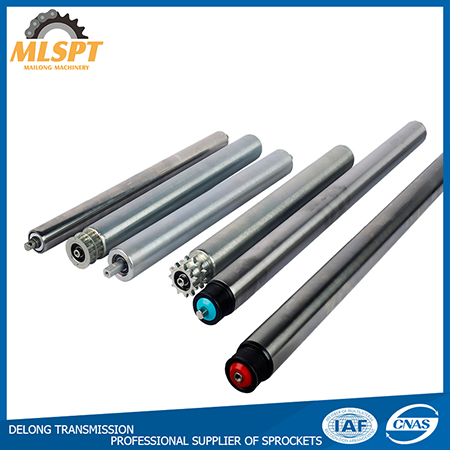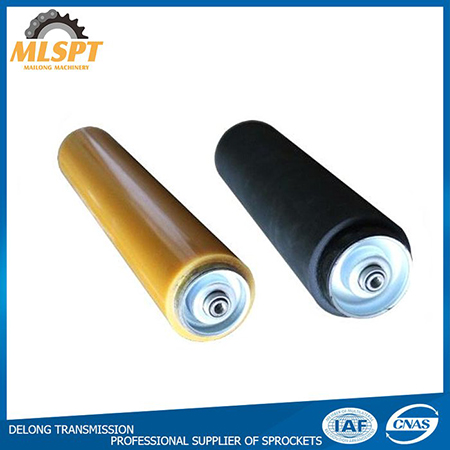HUZHOU EARN DOLLAR INTELLGENT EQUIPMENT CO., LTD.
When shipping products through the factory, sometimes you just need a little more.
For automatic conveyors, motor conveyors driven by spools, chains, and belts have been the main solutions in the past. In the past few years, 24V DC motor-driven rollers (MDR) have gradually become popular.
The 24V DC MDR conveyor is an ideal choice for stacking. Its operation is similar to other styles of stacking conveyors. It uses a photoelectric eye to "see" an item and then triggers its corresponding roller part to stop stacking.
The difference between other conveyor types and motor driven conveyor roller is that the selector roller in a section of rollers contains an internal 24 volt DC drive that controls the accumulation zone independently of the other zones . The length of these areas can be as short as 1 foot. Because the operation of each area can be opened and closed independently, the MDR automated conveyor system is very suitable for stacking boxes, handbags or pallets of products.

Compared with traditional conveyors, MDR conveyors provide non-contact product accumulation and reduce total energy consumption. But in a world where all conveyors are increasingly regarded as commodities, how do you distinguish one 24V DC MDR conveyor solution from other solutions?
The main difference lies in the ease of setup and configuration of the MDR conveyor. These are the 6 key functions you need to look for in your MDR conveyor belt. These functions will make your system setup and configuration easy and flexible. They include:
Advanced control card technology. The ideal MDR conveyor control card includes built-in accumulation logic, which can be quickly and easily set up out of the box, as well as PC-based motor type, speed, expansion and other configurations. In addition, its programmability can be adapted to more complex operations (including running two motors or output to other actuators, including solenoids), and has the main programmable logic controller (PLC) of the facility via Ethernet to perform The ability to communicate to receive commands and diagnostic reports (such as current). Stretching and roll temperature).

Adjustable roller speed. The MDR roller with a wide speed range (and adjustable acceleration and deceleration on the network) and large starting torque can minimize the number of different parts required, including installation in applications running at various conveyor speeds Parts.
Automatic detection of operations, components. What is the direction of the motor (and conveying direction)? Is there a sensor input that needs to be recognized? The ideal MRD conveyor control card can detect the operation of the system, as well as any connected sensor type.
Built-in error management. Obstacles occurred. After completion, the ideal MDR conveyor can be easily compensated by built-in paper jam detection, arrival timeout and automatic reset functions to prevent disasters.
Multifunctional design and construction. The conveyor platform equipped with rollers should have a simple design and structure with reliable, cost-effective and efficient snap-on components to ensure easy installation and maintenance. It should also include straight, curved, spurs, transfers, transfers and other special components that are easy to integrate.
Unlimited installation options. If needed, MDR conveyor integrators should be able to use unique inter-rack width, length, roll center, zone length, speed and a variety of customized equipment, such as multi-roller drive rolls, cryogenic components, sleeve rolls, belt zones, Sensors, custom paint colors, special guardrails, frame modification, etc.